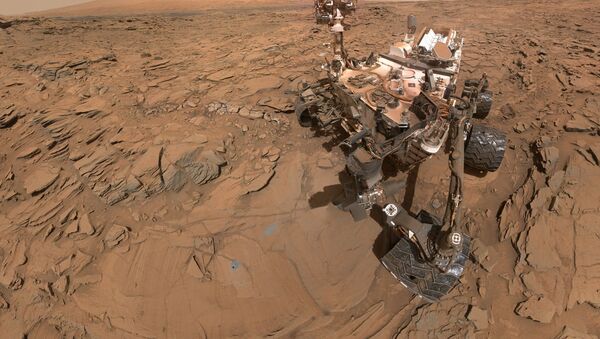Since an issue with the motor is currently preventing the rover's drill from spinning, it has instead been keeping busy conducting the first close-up examination of the active Martian dunes. Dunes are generally classified by their shapes: there are linear dunes that tend to be pretty straight and are longer than they are wide, crescent shaped dunes, star dunes that have arms like the spokes on a wheel, dome dunes and parabolic dunes.
From early February to early April, the Curiosity rover observed four sites near a linear dune to compare with the findings from a late 2015 and early 2016 inspection of the planet's crescent-shaped dunes.
One of the questions the dune campaign is addressing is how exactly the complex Martian winds shape the dunes, which cluster so closely on the same side of the same mountain, into different patterns. The researchers also hope to find out whether Martian winds organize grains of sand in ways that affect the distribution of mineral compositions, which would impact studies of Martian sandstones.
"At these linear dunes, the wind regime is more complicated than at the crescent dunes we studied earlier," said Mathieu Lapotre of Caltech, in Pasadena, California, who helped lead the Curiosity science team's planning for the dune campaign.
"There seems to be more contribution from the wind coming down the slope of the mountain here compared with the crescent dunes farther north."
Another important difference between the first and second phases of the Curiosity dune campaign is that the visit to the linear dunes takes place during Mars's high-wind season, so space experts got to see a lot more movement of grains and ripples.
NASA Rover Samples Active Linear Dune on Mars https://t.co/SE6okh9r5T pic.twitter.com/AMoD3JnfJx
— Dr. Manuela Rossol (@Abana09) 5 мая 2017 г.
One portion of sand scooped up from a linear dune has been analyzed with the Sample Analysis at Mars (SAM) instrument inside the rover. The plan is to take more sample portions to SAM and to the rover's Chemistry and Mineralogy (CheMin) instrument, but the winds make it hard for the Curiosity's arm to insert samples into its instruments.
The rover has been taking pictures and gathering data since it landed near Mount Sharp in August 2012. On Friday, NASA released a fresh collection of stunning photos from Mars taken by Curiosity that give viewers a look at a breathtaking sandy scenery on the Red Planet.






